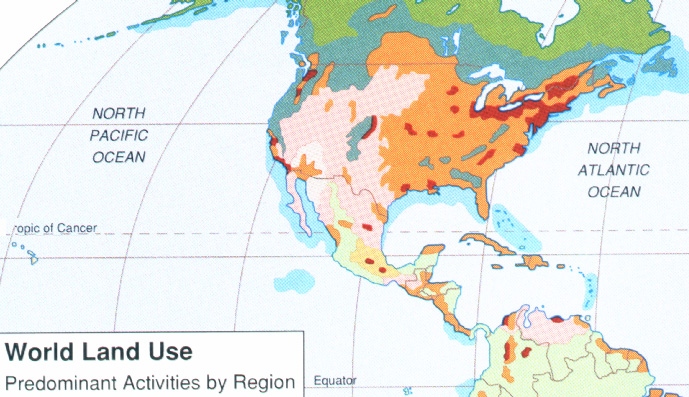The United States and Mexico
"True, the opposition between the United States and Latin America is not an opposition between civilizations: it pertains instead to the subgenus of contradictions within the same civilization."
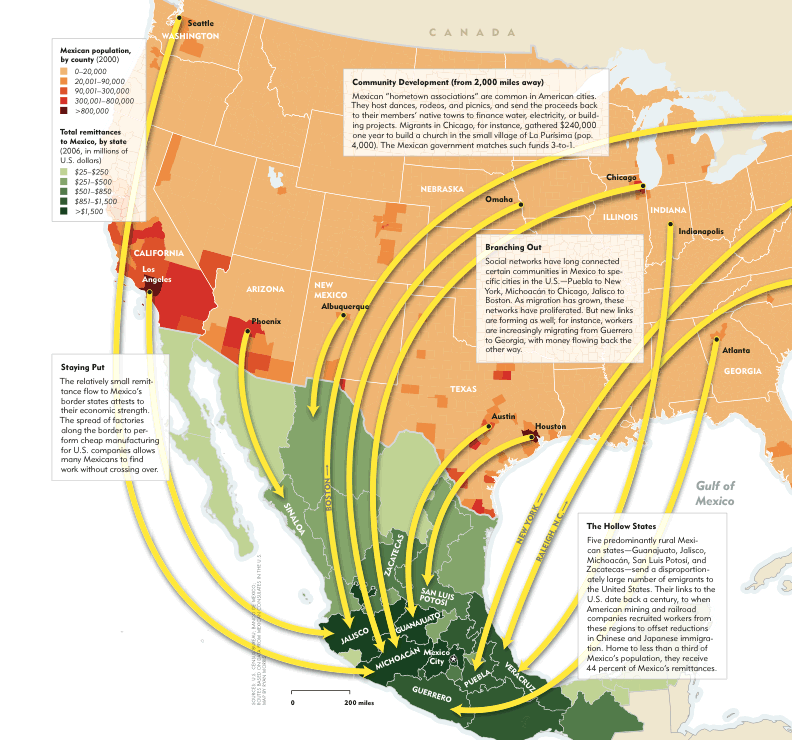
The Other Mexico
""The reality of the United States' economic and political imperialism is a fact that needs no demonstrating; it has been analyzed again and again. But the opposition between the United States and Latin America is not only of an economic and political nature [character]; the dichotomy is both older and more profound."
The Other Mexico, p. 251.
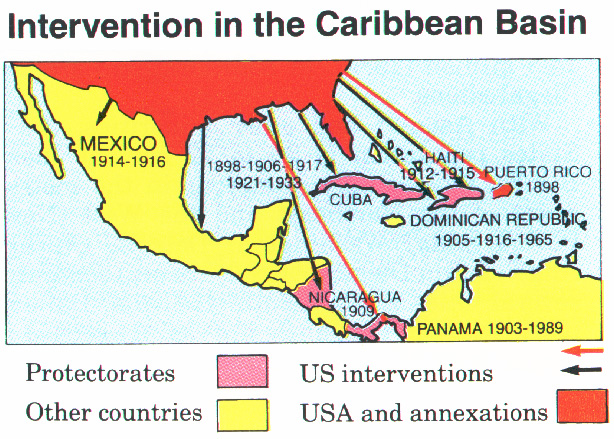
" . . . as long as this inequality of forces exists, so with the United States' domination over the rest of the hemisphere."
"I am speaking of realities that the modern world has stubbornly forgotten or denied but that now appear with still greater force: the whole complex of attitudes toward the world and the other world, life and death, the I and the other, that make up what we call civilization."
Paz, The Other Mexico, p. 252.
"The economic development of Mexico would have been impossible without three circumstances –industrialization, the influence of the United States, and the new capitalist class . . .There is still another one, equally important , the revolutionary reforms, though they failed to create a new social order, did break-up the great land holdings of the old regime, thus freeing the social forces that have changed the face of Mexico in the last {seventy] years."
Paz, The Other Mexico, p. 257.
"It is frequently forgotten that only a portion of the west . . . really possesses a tradition of political democracy and and critical thought, the two central and complementary elements of what we call modernity."
"Development and other Mirages," Paz, p. 279.
" . . the distinctive feature of the Mexican situation is the existence of a political bureaucracy set up in a state party and composed of specialists in the manipulation of the masses."
p. 278.
"two nations separated by a common history and boundary."
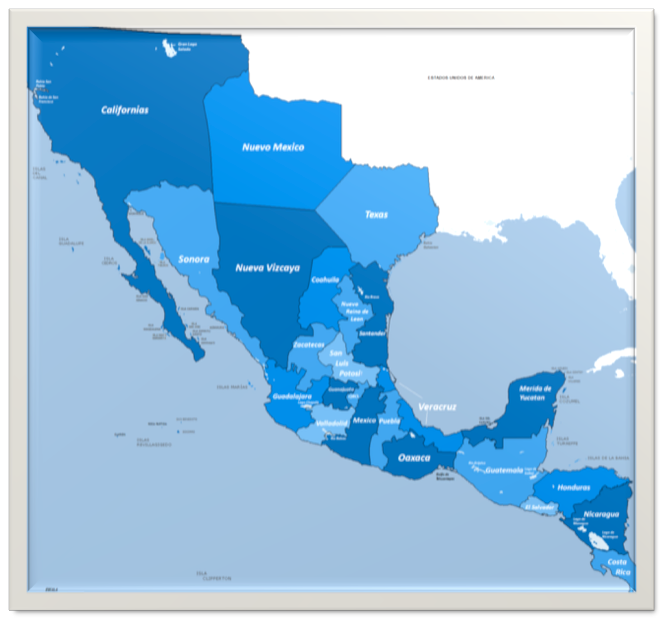
Outline
US and Mexican differences
"Of course, the differences between Mexico and the United States are not imaginary projections but objective realities. Some are quantitative and can be explained by the social, economic, and historical development of the two countries. The more permanent ones, though also the result of history, are not easily definable and measurable . . . . They belong to the realm of civilization . . . fused and confused ideas and beliefs . . . the material culture and that evasive reality . . . ."
". . . the idea that the Mexican people have of the United States is contradictory, emotional and impervious to criticism; it is a mythic image."
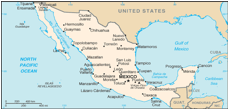
"In short, the history of our relationship is the history of mutual and stubborn deceit, usually involuntary though not always so."
p. 358.
Interview with Paz; "Return to the Labyrinth of Solitude:"
"History is knowledge situated between science and poetry."
"A historian describes like a scientist . . . has visions like a poet."
"History gives us an understanding of the past and sometimes of the present."
"It is wisdom rather than learning."
Paz says he attempted to describe his "view of Mexican character through Mexican history."
because for him living is synonymous with "to be surrounded by historical circumstances."
p. 333.
The question of our task.
C, Galeano, pp. ix-58.
“War of the Worlds” Eduardo Galeano speaking
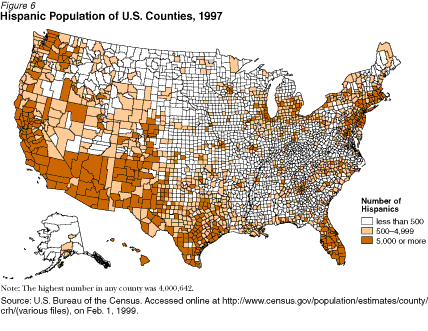
According to U.S. Census Bureau population estimates as of July 1, 2013, there are roughly 54 million Hispanics living in the United States, representing approximately 17% of the U.S. total population, making people of Hispanic origin the nation's largest ethnic or race minority.
CDC on Minority Health
Of the Latino population of the United States, the percentage of each Latin American nationality is shown as pieces of a pie chart in proportion to their demographical contribution to the USA population.
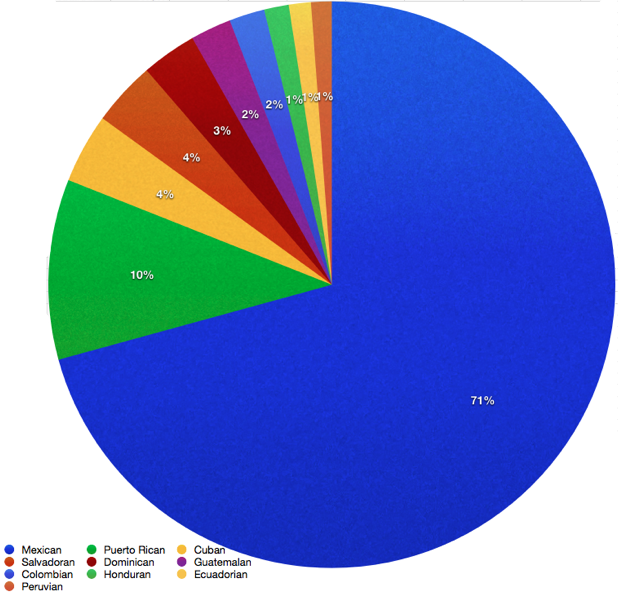
"The Hispanic origin population is projected to increase rapidly over the 1995 to 2025 projection period, accounting for 44 percent of the growth in the Nation's population (32 million Hispanics out of a total of 72 million persons added to the Nation's population). The Hispanic origin population is the second fastest-growing population, after Asians, in every region over the 30 year period."
United States Census Bureau Report.
D. The challenge:
Can we write a history of the Caribbean and Mexico that authentically portrays the revolutionary character of the events that changed the Caribbean, altered world trade, fostered commercial, dietary, and industrial changes, and freed the region from colonialism when we inhabit a country fixated on its own narrower revolution as a success story?
